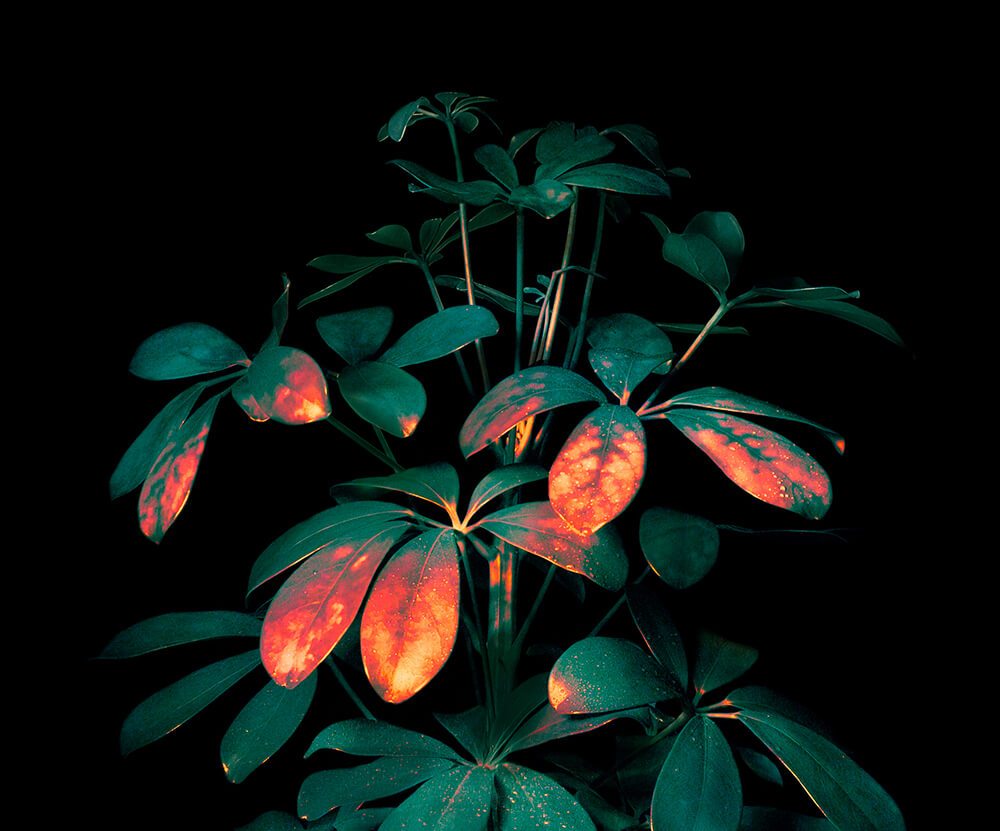FEATURED STORY
Beyond the Visible Spectrum
WITH LISA VAN CASAND
An insight into Lisa van Casand’s exploratory project ‘Fluorescent Signals’
“STRESS DETECTION IN PLANTS – 2016
The photosynthesis efficiency of a healthy plant can reach up to 83%. When a plant is under stressful conditions photosynthesis decreases, sometimes even to the point that no light is absorbed at all. The amount of stress is determined by measuring the plants fluorescence. Under normal conditions, when photosynthesis efficiency is high, fluorescent emission is low. However, when a plant is under stressful conditions photosynthesis efficiency is low, and fluorescent emission is high. The experiments carried out in these case studies measure the plant’s stress level when put under potentially damaging conditions”. – Lisa van Casand
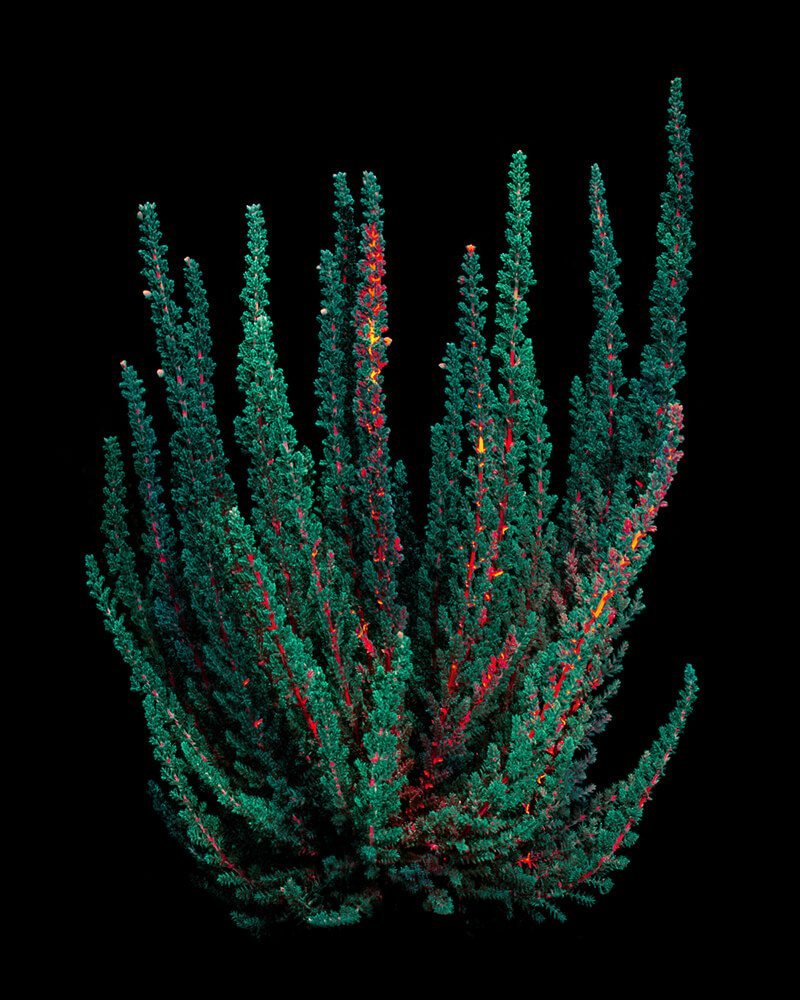
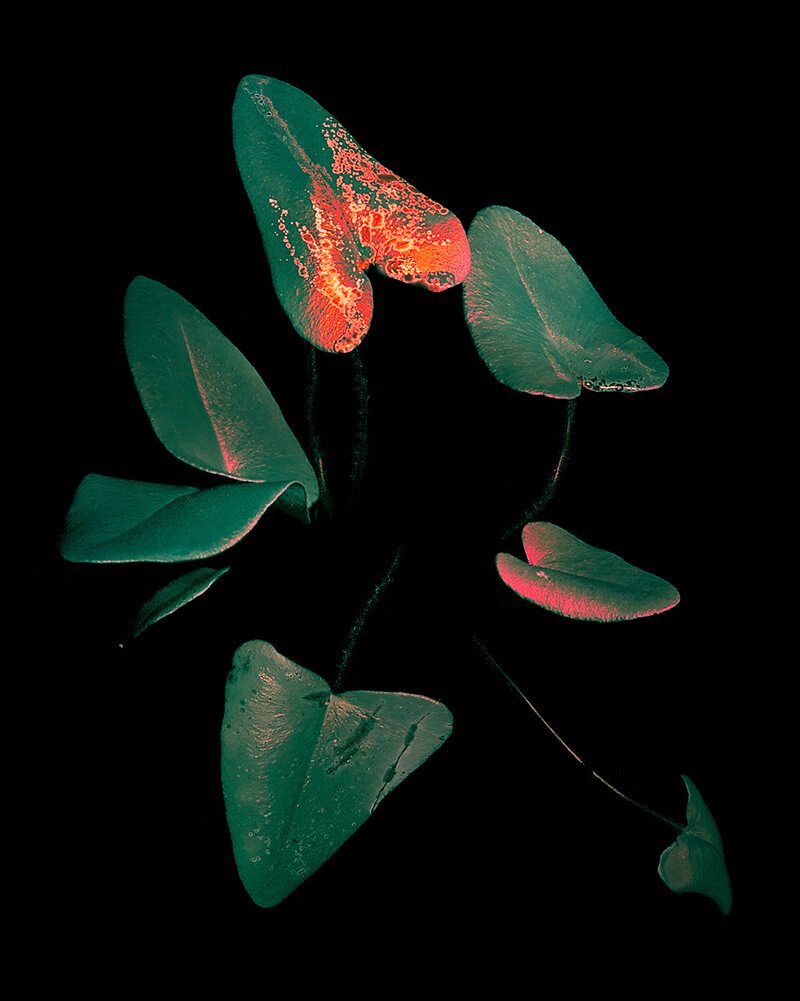
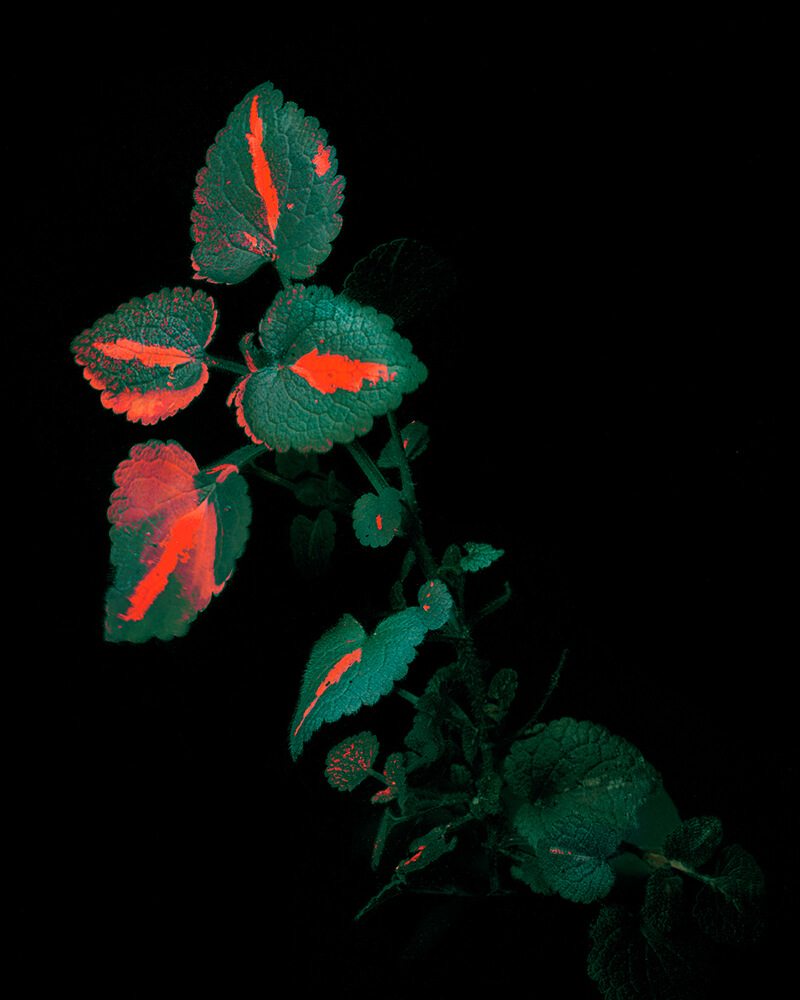
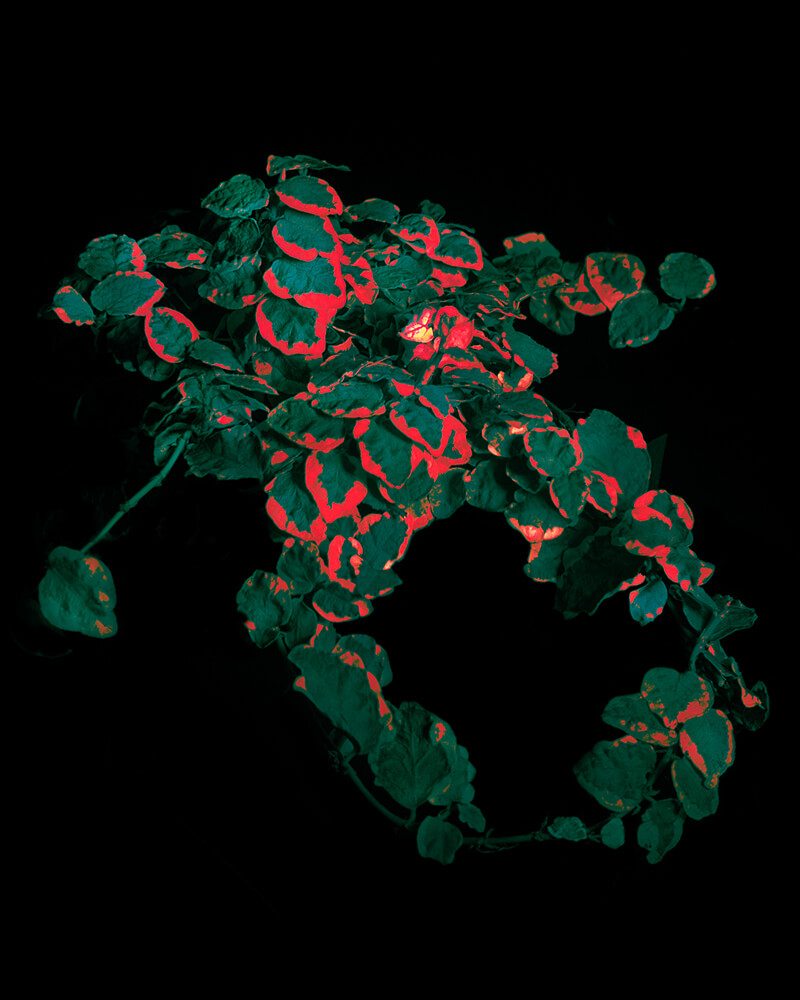
Your work Fluorescent Signals is borne of a scientific approach, with each image the result of a controlled experiment carried out by you, and the results published in graphs and technical notes. Can you describe the genesis of the project, and how this approach was developed?
A friend told me about the reaction of plants to a stressful environment. He told me that plants always emit a fluorescence and when put under stressful conditions, this fluorescence increases. I had never heard about the term stress in relation to plants. I immediately found it a mesmerizing idea that plants actively react to their environment, but that our eyes are just not capable of seeing it.
During the third year of my studies at the Royal Academy of Art in The Hague I decided to see if it was possible to photograph this reaction. So, over the course of half a year, I collaborated with the plant scientist Vincent Jalink from PhenoVation. Our goal was to turn the technique that he uses into a full frame photographic one. As soon as we had the technique figured out, I bought dozens of plants, took them to my studio and started thinking of ways to put the plants in different stressful environments.
With this experimental approach, was the aesthetical output for the six images clear in your mind from the start, or was that a result of investigation too? And how was the effect actually achieved? The visual cohesiveness of the series, and the rich palette of reds and oranges against the plant life, is quite powerful…
When I started this project, I had no idea what it was going to look like, or if it was even possible to photograph the reaction. Our visible spectrum is much more limited than that of a camera, so that is why I hoped there would be a possibility. I eventually photographed the plants in a light-tight room, with specific led lighting and a lens filter. This made it possible for the camera to detect the differences in intensity of the fluorescence emitted by the plant. When I saw the first image, after having put the plants bare roots into cleaning vinegar, I was really surprised by the outcome myself! The plant looked exactly the same when I switched the lights on, but on the screen of my camera it was glowing. So, if we could see beyond our limited visible spectrum, plants would appear to us as glowing organisms, directly responsive to their environment. It made me think of how my senses (and especially their limits), my sight, my hearing, my smell, lead many of my convictions on how I perceive the world around me.
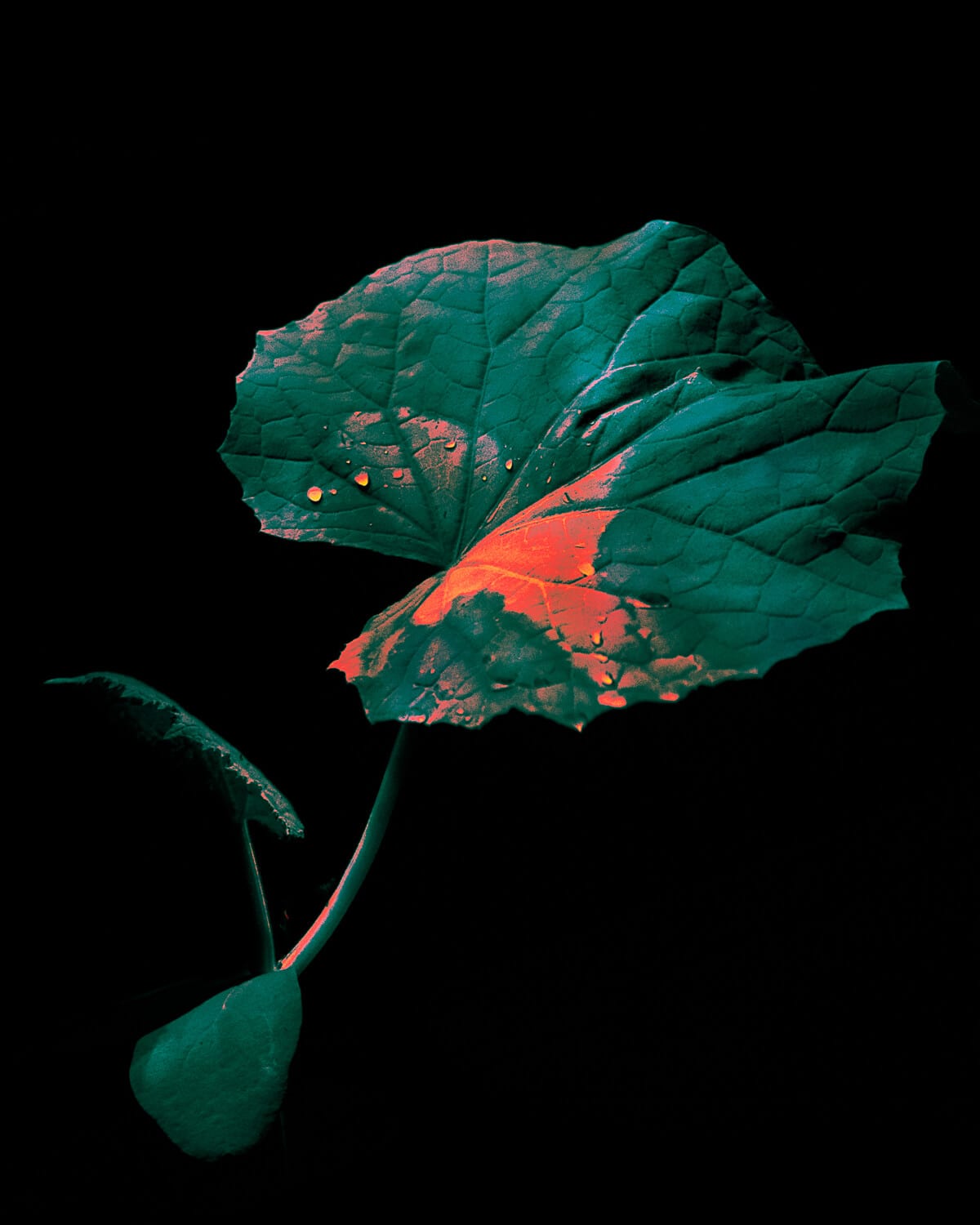
How much research was required before embarking on the experiments? And were they simple to execute or were there challenges along the way?
It took me quite some time (and a lot of plants) to be able to make these images. One of the hurdles was to choose the combination of the right plant with the right external stress factor. For example, spraying chlorine on a plant has a great effect; the plant immediately starts to hang. I needed an exposure time of at least 30 seconds to be able to see the fluorescence, so it took me a while to find a plant that was strong enough to stay upright, but also vulnerable enough to see the effects of the chlorine.
With a few notable exceptions, art and science rarely mixes. Would you describe yourself as a scientist as well as an artist?
I would not call myself a scientist. Aside from the fact that I don’t think I deserve the title, I think my approach towards the project is more an artistic one. In my projects I do use scientific language. I use photography, do experiments, dig up information, interview, interpret findings, calculate and measure; all tools invented by humans to create an understanding of the world around us. But clarity and knowledge are not the desired outcomes of my research.
I usually choose subjects that are enigmatic, like a scientific research that shakes fixed thinking patterns or an enigmatic historical event. The research into stressful behaviour in plants is linked to a larger field of research on ‘intelligent’ behaviour in plants. Plant scientist are debating new ways of understanding flora. Recent research has in many ways shown remarkably brainy behaviour in the absence of an actual brain. Some ask whether we should not broaden our perspective on what intelligence means. Others argue that even the words ‘stress’ and ‘intelligence’ should be used exclusively for human beings. So, this new research forces us to redefine terms in which we think and talk about plants. Such a subjective act of producing and interpreting information is recurrent in all my work.
What I found very interesting when showing ‘Fluorescent Signals’ were the reactions of the viewer. Some called me a sadist and others, funnily enough, called me a tree hugger and said that I should not imply that plants have consciousness or feelings – even though I deliberately avoid those words.
And finally, one of the images was selected in our ‘Open Call’, and the judge’s comments referred to the idea of the fragile relationship between man and nature – “how our actions as humans can damage our environment in ways that are often invisible” and the subtle irony in how “that damage manifests itself in something so beautiful”. Was this a theme – or message – you had in mind when creating Fluorescent Signals, or is it coincidental?
The fragile relationship between man and nature was on my mind. As I mentioned earlier, what I was going to see when creating these images was a mystery to me as well. Many of the visual elements were also decided by the technical process. However, the aesthetic, painterly quality and framing of the images was something that I was looking for at the same time. I find the reference to painterly still lives – in which plants have long been perceived as inanimate, static and decorative objects – an interesting contradiction to the content of the images.
